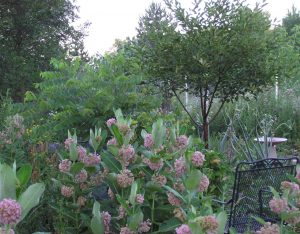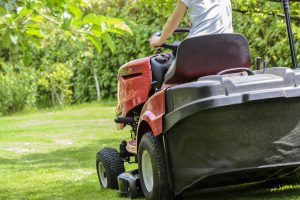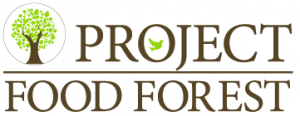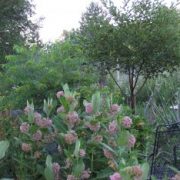5 Reasons Your Business Should Install a Public Food Forest
 Public food forests are popping up around the nation. And even though they’ve been around for thousands of years in one way or another, they’re a now a hot trend in America.
Public food forests are popping up around the nation. And even though they’ve been around for thousands of years in one way or another, they’re a now a hot trend in America.
What’s a public food forest? A public food forest is a garden comprised of trees, shrubs, vines, perennials, and self-seeding annuals designed to form an ecosystem so that once it’s established, it mostly maintains itself with a little help from people. This eco-garden is open to the public to come and harvest for free. It’s different from a community garden, because it is not tilled every year; it is not planted every year; “weeds” and wildlife (including insects) are embraced, not shunned; and it is not divided into individually maintained plots. The whole thing is open to everybody.
Churches, temples, apartment complexes, hospitals, and businesses in Sioux Falls, SD are being offered a unique opportunity. Project Food Forest will design and plant edible features on your property, which, depending on the nature of the organization, could reap you copious benefits. Here are five reasons you should plant a public food forest on your commercial, industrial, institutional, or multi-family housing property:
 1. Social Responsibility
1. Social Responsibility
Social Responsibility is an individual’s or organization’s duty to act for the benefit of society. When an organization gives to, and thus strengthens a community, the community is not only better able to support that organization, but it is more likely to want to support that organization.
Planting a public food forest or some sort of sustainable and publicly accessible food feature on your organization’s property does exactly that. Public food forests help feed people, which makes a community stronger and promotes peace. They can also grow food in a sustainable way and help educate the public in sustainable food production.
2. Increase Rental Appeal
Imagine a rental ad that includes this: “Harvest food for free from on-site food forest.” Now that’s a strong selling point! So many apartment dwellers wish they could have a garden, but community gardens have long waiting lists and often cost money. Traditional annual vegetable gardens at apartment complexes often result in disappointment when vandalism or theft spoils the hours of hard work that went into them. Food forests don’t require yearly planting and tending, and better yet, aren’t susceptible to theft because they are open to everyone to harvest from. Gardens and edible features at apartment complexes are a fast-growing trend, and you are wise to consider installing one now.
3. Bring More Customers Through the Door
Inevitably, a food forest will bring in more people than a lawn or flower bed. As more people come to the food forest to congregate, harvest, or just view the beauty, more people will be right there and likely to stop inside. If you’re a church, temple, or retail store, you’re likely to benefit from drawing crowds to your property.
 4. Save Money
4. Save Money
If you’re replacing a highly manicured lawn with a low-maintenance edible landscape feature, you might even save money. Many of the benefits of any social responsibility effort are subjective or hard to measure, including installing a public food forest. But you might also see immediate cost savings after ditching the lawn. Why spend time and money on lawn when we can fill that space with food?
5. It Feels Good
Planting sustainable edible features on your property will promote health, community, and sustainability. It will produce food where no food was produced before. It will reconnect people with nature and show children where food really comes from. It will be a sincere and firm step forward in local vitality, sponsored by your organization. It won’t just look good for your organization, it will feel good to all who are involved.
If you want to know more about collaborating with Project Food Forest to install low-maintenance edible landscaping on your property, contact us today!



